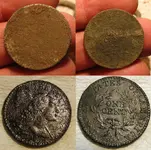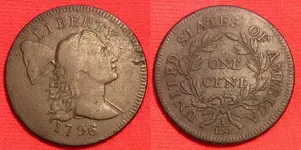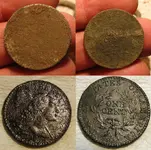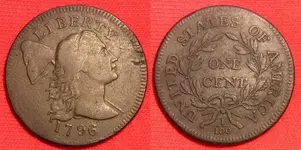It is important to get dirt off an old copper, to dry it thoroughly and to protect the coin from further corrosive damage.
Also, since your 1794 Large Cent is one of about 60 varieties for that year, they vary from Very Common to Very Rare. With the Very Rare having value even when it is a worn corroded ground found in some cases.
So, cleaning to the best of your ability is important to help bring out the minute details that can determine the variety of your coin, and even if no thoughts ever of selling, it is always nice to know which variety you have. If after cleaning the coin is not too bad, a posted photo could result in determining the variety, but not always, depends on the wear factor in many cases.
Attached is a photo of one of my 1794 Large Cents that it shown Before cleaning and after cleaning and preservation, it is not the best in shape corrosion wise, the Obverse is coated much more than the Reverse, but at least I was able to identify the variety as a S-55 (a Scarce variety) and it is a nice addition to my collection.
Not all coppers need cleaning, but most do to at minimum get the corrosive, acidic or alkaline dirt away from the metal, soak the coin in distilled water for hours up to a day if needed, then thoroughly dry the coin before applying a preservative (if needed) to stop further corrosion while the coin is stored.
I am also attaching a 1796 Liberty Cap Large Cent photo, and this coin required no cleaning or preservation, it was found in clean white sand with no organic matter to cause corrosion. But that is the exception to the rule.
Here is my post on cleaning Large Cents (coppers) the 3 post down are the procedures, PRACTICE on a button or more common ground found copper first, highly recommended to do so. I have done hundreds of coppers with this method, I used to use Olive Oil and regret it to this day, especially for my buttons.
http://forum.treasurenet.com/index.php/topic,39135.0.html
Don









